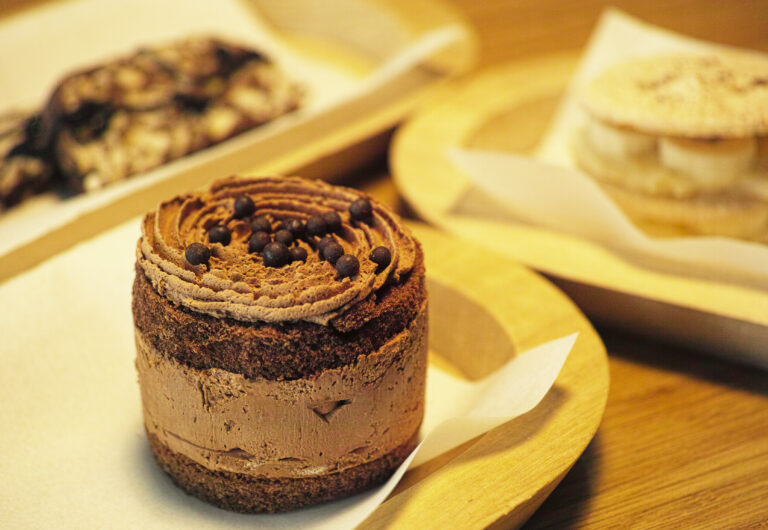There’s an undeniable magic in the first bite of a perfectly crafted French pastry. From the flaky layers of a buttery croissant to the delicate crunch of a macaron, these creations are more than just desserts—they’re a testament to centuries of culinary artistry. French pastries have become a global symbol of sophistication, celebrated for their precision, innovation, and ability to transform simple ingredients into edible masterpieces. Whether you’re indulging in a Parisian pâtisserie or attempting a recipe at home, exploring these treats offers a window into France’s rich cultural heritage. This guide will take you through their history, techniques, iconic varieties, and even where to find the best examples—or how to bake them yourself.
What Sparked the Evolution of French Pastry?
The story of French pastry begins in the Middle Ages, when sugar became a prized commodity reserved for royalty. By the 16th century, Catherine de’ Medici’s Italian chefs introduced advanced baking methods to France, laying the groundwork for future innovations. The 17th and 18th centuries saw the rise of iconic figures like Marie-Antoine Carême, who transformed pastry into an architectural art form with elaborate croquembouches and mille-feuilles. Later, Auguste Escoffier modernized techniques, codifying recipes that remain foundational today.
French pastry’s evolution mirrors societal shifts. The 19th-century industrial revolution brought refined sugar and butter into everyday kitchens, democratizing desserts like éclairs and tarte Tatin. Today, chefs like Pierre Hermé and Cédric Grolet continue to push boundaries, blending tradition with avant-garde creativity. This rich history isn’t just about recipes—it’s a narrative of cultural identity and relentless pursuit of perfection.
What Are the Essential Techniques for Mastering French Pastry?
Precision: The Heart of French Baking
French pastry demands scientific accuracy. Ingredients like T45 flour (ideal for tender pastries) and T55 flour (used for breads) are chosen meticulously. Measurements matter: a few grams’ discrepancy can alter a macaron’s texture or a croissant’s rise. Even butter temperature is critical—beurre noisette (brown butter) requires precise heating to achieve its nutty aroma without burning.
Foundational Methods Every Baker Should Know
Mastery begins with techniques like laminating dough for pâte feuilletée (puff pastry), where layers of butter and dough create flaky perfection. Equally vital is pâte à choux, the versatile dough behind éclairs and profiteroles. Custards like crème pâtissière and ganache require careful tempering to balance silkiness and structure. These skills aren’t just steps—they’re the language of French pastry.
Iconic French Pastries and Their Secrets
Croissant vs. Pain au Chocolat: Breakfast Classics
While both use laminated dough, a croissant’s crescent shape and airy crumb contrast with the pain au chocolat’s rectangular form and chocolate-filled core. The secret? Quality butter and patient proofing. Overworking the dough or rushing fermentation leads to dense layers—a cardinal sin in French baking.
Elegance in Every Bite: Éclairs and Macarons
An éclair exemplifies balance: crisp choux pastry filled with silky vanilla cream and topped with glossy ganache. Meanwhile, macarons challenge bakers with their finicky meringue shells. Achieving the perfect “feet” (the ruffled base) requires exact folding and resting times. Regional twists like lavender or matcha fillings keep these classics fresh and exciting.
Petite Pleasures: Madeleines and Canelés
Humble yet complex, the madeleine—a shell-shaped sponge cake—relies on browned butter for its nutty depth. The canelé, with its caramelized crust and custardy center, showcases how humble ingredients like rum and vanilla transcend simplicity. Both pastries prove that size doesn’t dictate impact.
Where Can You Find the Best French Pastries?
Paris remains the holy grail for pastry enthusiasts. Iconic shops like Ladurée (renowned for macarons) and Stohrer (France’s oldest pâtisserie) offer time-tested delights. For modern twists, visit French Bastards in Montmartre, where croissants get a playful spin with miso or matcha. Beyond Paris, Lyon’s Pâtisserie Sébastien Bouillet and Bordeaux’s Maison Baudard highlight regional specialties like praline tarts and cannelés bordelais.
However, exceptional pastries aren’t confined to France. Cities like New York and Tokyo boast French-trained chefs reinventing classics. Regardless of location, look for shops emphasizing fresh, high-quality ingredients—the hallmark of authentic French pâtisserie.
How to Bring French Pastry Magic into Your Kitchen
Step-by-Step Success Tips
Start with simpler recipes like madeleines or pâte sablée (shortcrust pastry) before tackling croissants. Invest in a kitchen scale and piping bags for accuracy. Online platforms like Le Cordon Bleu’s Masterclasses offer guided tutorials, while Christophe Adam’s Éclairs cookbook provides foolproof techniques for advanced bakers.
Adapting Recipes Without Sacrificing Flavor
Gluten-free? Substitute almond flour for traditional wheat in financiers. Vegan versions of crème pâtissière can use coconut milk and cornstarch. While substitutions require experimentation, they prove that dietary restrictions needn’t limit indulgence.
How Are Chefs Reinventing Classic French Pastries Today?
Modern pastry chefs blend tradition with global influences. Dominique Ansel’s cronut (a croissant-doughnut hybrid) sparked a worldwide trend, while Parisian shops experiment with yuzu-infused ganache and saffron macarons. Fusion desserts like matcha mille-feuille or tahini-chocolate éclairs reflect a growing appetite for cross-cultural creativity.
This innovation extends to sustainability. Chefs like Jessica Préalpato champion “natural” desserts, reducing sugar and highlighting seasonal fruits. Such approaches honor French pastry’s roots while aligning with contemporary values.
Regional Variations: A Tour Through France’s Sweet Landscape
France’s diverse regions inspire distinct pastries. Normandy’s apple-rich orchards birthed the tarte Tatin, while Alsace’s Germanic influences shine in kugelhopf, a yeasted cake studded with raisins. Provence favors lavender and honey, as seen in navettes (boat-shaped biscuits). These regional gems remind us that French pastry is as varied as its geography.
From their historical roots to modern reinterpretations, classic French pastries offer endless delight. Whether you’re savoring a buttery croissant at a cobblestone café or perfecting macarons in your kitchen, each bite carries a legacy of artistry. Ready to begin your own pâtisserie journey? Pick a recipe, gather your tools, and let the allure of French baking transform your home—and your palate.


